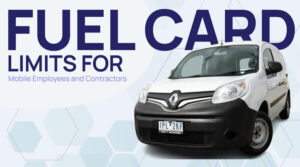According to the RAA, misfuelling costs Australian motorists over $10M per year leaving thousands stranded at the petrol station waiting for roadside assistance.
So what happens when you accidentally fill up with the wrong fuel and how can you avoid it?
An introduction to petrol types
At a petrol station fuel pump there are several different fuel types to choose from. If you’re not concentrating, you can make the common mistake of filling up with the incorrect fuel. You may also opt for the cheaper petrol nozzle which might not be the best choice for your car in the long run.
The majority of petrol engine vehicles will run on any of the petrol offered at the service station, except E85. The key difference between petrol types and the numbers is the ‘Research Octane Number’ (RON). This determines the level of heat the fuel can handle before it pre-ignites in the engine. The octane number essentially indicates how efficient the fuel is for your car’s engine.
Regular unleaded petrol is rated 91RON whereas the highest grade premium petrol is 98RON.
You may also have noticed ethanol blend fuel offered at your service station. E10 and E85 are popular choices of fuel for many Australian motorists due to their affordability. Vehicles with a fuel system suitable for regular unleaded petrol 91RON can use E10 fuel and E85 can be used as a substitute for many fuel types.
However, if your car isn’t suitable for ethanol blend petrol you could cause serious damage to your fuel filter, lines and engine. You’re best to check with your vehicle’s manufacturer before you put ethanol lends into your fuel tank.
What happens when you choose the wrong petrol?
When filling up a petrol car it is important you don’t just grab any petrol nozzle. To avoid damaging parts of the fuel system and to keep your car running efficiently, it’s best to stick with the recommended fuel type that’s listed on your car’s fuel flap or in the manual.
This is particularly the case if your car is designed to run on premium unleaded 95 or 98 and you fill up with 91RON. This can cause engine damage and result in a loss of acceleration. The fuel economy of your vehicle may also be affected.
If you’re driving a car that takes 91 unleaded and you fill up with a premium 95 or 98 fuel, don’t panic as this won’t lead to any engine damage. You may just not a difference a little less cash in your wallet.
What happens when you put petrol into a diesel car?
Putting petrol into a diesel fuel car can be an expensive mistake leading to serious damage that isn’t typically covered by your insurance policy or warranty. In fact, in the worst case scenario, you may never be able to drive your beloved car again.
Put petrol into a diesel fuel tank and it creates a solvent like a mixture reducing your car’s lubrication. Once you start the car’s engine, it circulates this mixture through the fuel system causing damage to the fuel pump, engine, filters and injectors.
If you notice the mistake when you have the petrol nozzle in your hand, it’s vital you don’t start the ignition. Call a roadside assistance service such as Wrong Fuel Rescue so they can carry out a full fuel drain.
In the event you have driven before realising your mistake, stop immediately (when safe to do so) and call for roadside assistance. You may have even noticed some strange noises from your diesel engine that will alert you to your error. A professional service will be able to remove the incorrect fuel through a full tank drain and flush your entire fuel system to prevent or minimise any serious damage.
What happens when you put diesel into a petrol car?
Putting diesel into a petrol car is a little harder to do as the diesel nozzle won’t fit seamlessly into your petrol tank. Instead, it will require a little more wrangling.
If you do manage to secure the diesel nozzle and fill up, don’t panic. While it can cause damage to the petrol engine, it may not be as serious as putting petrol into a diesel engine.
To reduce the damage, it’s important you don’t start the engine. Turning the key in the ignition will allow the diesel fuel to circulate and lead to damage of the fuel injectors and fuel lines.
The same rules apply as the above scenario. Avoid driving the car and call a professional roadside assistance team so they can resolve the problem.
How to avoid filling up with the wrong fuel
Putting the wrong fuel in your vehicle is not just an embarrassing mistake, but it can be an extremely costly one. Remember, most warranties and car insurance policies won’t cover the costs.
The best way to avoid filling up old and new cars with the wrong fuel is to stay alert.
Take a moment to look at the recommended fuel type on your car’s fuel flap and read the words on the fuel nozzle instead of simply looking at the price. If you are borrowing a car from a friend or driving a hire vehicle, ask the station attendant to help you or take a look at the car manual.
Our advice to spare yourself the embarrassment and avoid ruining your car is to simply pay attention when you’re at the petrol station fuel pumps.


